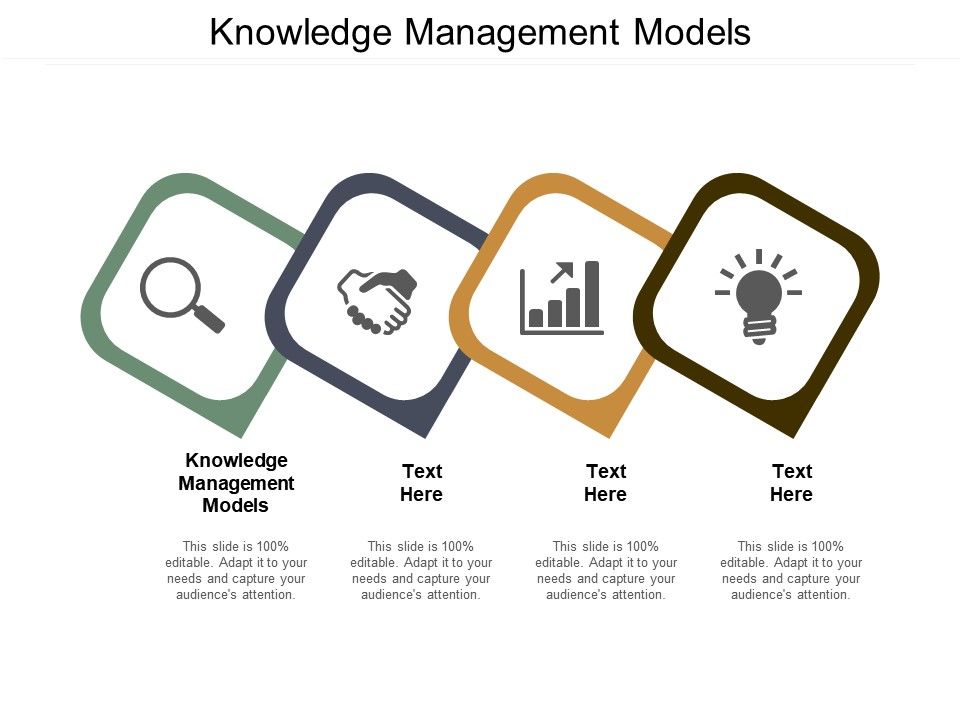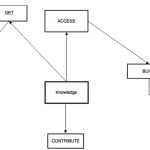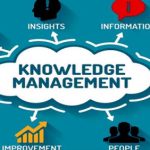All the Knowledge Management models described in this chapter attempt to address knowledge management from a universal and broader perspective.
von Krogh and Roos Model
The von Krogh and Roos model of organizational epistemology (1995) is the first model that precisely differentiates between individual knowledge and social knowledge.
This model, analyzes the following aspects
● Why and how the knowledge gets to the workers of a company
● Why and how the knowledge arrives at the organization
● What does knowledge mean for the workers as well as the organization
● What are the barriers of organizational knowledge management
In their organizational model, knowledge is to be found both in the mind of the people and in the links between them.
This model examines the nature of knowledge management from the perspective of −
● Staff members
● Communication and connection
● Organizational structure and layout
● Network between members and
● Management of human resources
The above five factors create issues that can prevent knowledge management strategies.
Nonaka and Takeuchi
The Nonaka and Takeuchi model of KM has its base in a universal model of knowledge creation and the management of coincidence.
There are four different modes of knowledge conversion in the Nonaka and Takeuchi model of knowledge conversion −
● Socialization (tacit to tacit) i.e. Indirect way,
● Externalization (tacit to explicit) i.e. Indirect to Direct way,
● Combination (explicit to explicit) i.e. Direct way, and
● Internalization (explicit to tacit) i.e. Direct to indirect way.

Socialization is the technique of sharing tacit knowledge through observation, imitation, practice, and participation in formal and informal communities and groups. This process is basically preempted by the creation of a physical or virtual space where a given community can interact on a social level.
Externalization is the technique of expressing tacit knowledge into explicit concepts. As tacit knowledge is highly internalized, this process is the key to knowledge sharing and creation.
Combination is the technique of integrating concepts into a knowledge system. Some examples or cases would be a synthesis in the form of a review report, a trend analysis, a brief executive summary, or a new database to organize content.
Internalization is the technique of embodying explicit knowledge into tacit knowledge.
Choo Sense-Making KM model
The Choo Sense-Making KM Model (1998) focuses on
● Sense Making
● Knowledge Creation
● Decision making skills
These three highly interconnected processes play a major role in the unfoldment of the organization’s knowledge vision, it’s potential to knowledge creation and its commitment into taking knowledge creation to the utmost consequences.
Sense Making − Its long-term aim is the warranty that organizations will adapt and continue to prosper in a dynamic and complex environment through activities of prospecting and interpretation of suitable information enabling it to understand changes, trends and scenarios about clients, suppliers, competitors and other external environment actors.
Knowledge Creation − It is a process that allows a company to create or acquire, organize and process information in order to generate new knowledge through organizational learning. The new knowledge obtained, allows company to develop new abilities and capabilities, create new products and new services, improve the existing ones and redesign its organizational processes.
Decision Making − The Company must choose the best option among those that are plausible and presented and pursue it based on the organization’s strategy. Decision making process in companies is constrained by the bounded rationality principle.
This model focuses on how informational elements are selected and fed into organizational actions.
WIIG Model
Karl Wiig KM model (1993) marks the basic principle which says, in order for knowledge to be useful and valuable, it must be organized and synchronized.
Some essential dimensions in the WIIGS KM model are −
● Completeness
● Connectedness
● Congruency and
● Perspective and purpose
Completeness − It describes how much relevant knowledge is available from a given source. Sources vary from human minds to knowledge bases (like, tactic or explicit knowledge).
First of all, we have to make sure, that the knowledge is complete if all the information available on the subject is there but if no one knows of its existence, they cannot make use of this knowledge.
Connectedness − It briefs about the well-understood and well-defined relations between the different knowledge objects. Most knowledge objects are connected to each other, the more connected a knowledge base is then the more consistent the content and the greater its value.
Congruency − A knowledge base congruent when all the facts, concepts, perspectives, values, judgments, and relational links and connections between the objects are consistent. Most knowledge content do not meet such ideals.
Perspective and Purpose − It is a technique through which we know something but from a particular point of view for a specific purpose. We organize much of our knowledge applying to the dual dimensions of perspective and purpose.
This model attempts to define different levels of internationalization of knowledge and therefore could be seen as a further refinement of the fourth Nonaka and Takeuchi quadrant of internalization.
Boisot I-Space
This model is based on the key concept of information which is good and that is different from a physical asset.
Boisot differentiates information from data by emphasizing that information is what an observer will extract from data as a function of his or her expectations or prior knowledge.
Boisot’s model can be seen as three dimensional cube with the following dimensions −
● From uncodified to codified
● From concrete to abstract
● From undiffused to diffused
He proposes a Social Learning Cycle (SLC) that adopts the I-Space to model the dynamic flow of knowledge through a series of six phases −
● Scanning − Wisdom is gained from generally available or diffused data.
● Problem-Solving − Problems are solved offering structure and coherence to these insights as knowledge becomes codified.
● Abstraction − The newly codified wisdom is generalized to a wide range of situations as knowledge becomes more abstract.
● Diffusion − the new wisdom are shared with a target population in a codified and abstract form as knowledge becomes diffused.
● Absorption − The newly codified insights are applied to a variety of situations generating new learning experiences as knowledge is absorbed and produces learnt behavior and so becomes uncodified or tacit.
● Impacting − Abstract knowledge becomes fixed in concrete practices, for example in artifacts, rules or behavior patterns as knowledge becomes concrete.
The Boisot’s model considers companies as living organisms. Their process of growing and developing knowledge assets within companies is always changing.
This means that companies need to adopt a dynamic KM strategy which accommodates the dynamic nature of the organizational learning cycle.
Complex Adaptive System Models
According to the ICAS (Intelligent Complex Adaptive Systems) theory, an organization is seen as an adaptive, complex system.
Complex adaptive systems includes many independent agents that interact with one another locally and their combined behavior gives rise to complex adaptive phenomena.

These models contain a series of functions that makes sure that the viability of any living system in general and of organizations, in particular.
ICAS systems are based on cybernetics principles, which uses communications and control mechanisms in order to understand, describe and predict what a viable organization should do.
Adaptive systems involve lots of independent agents which are interacting. Their behavior makes possible the appearance of some complex circumstances of adaptation. A general model of a complex behavior is the result of all the interactions. Inside the adaptive model, the intelligent elements are made of people who are self-organized, but who can remain as a part of general hierarchies of the organizations.
The challenge is to use the advantage offered by the force of the people when they cooperate, keeping a global sense of unity. Organizations solve issues by creating options, using resources, both internal and external, that can add value over the initial input.


